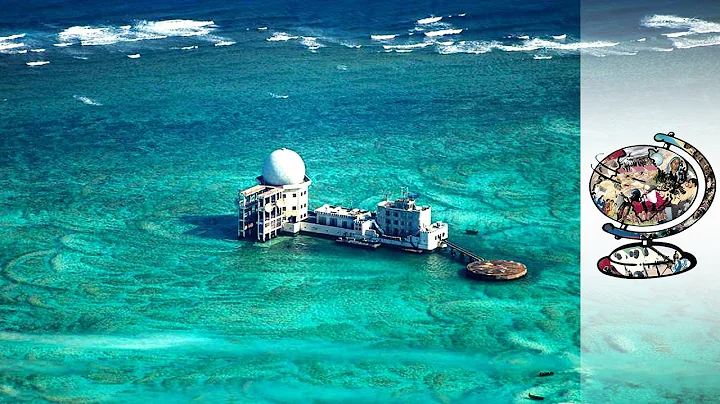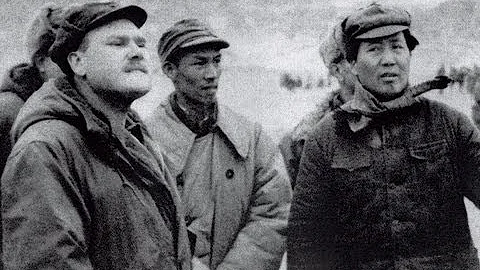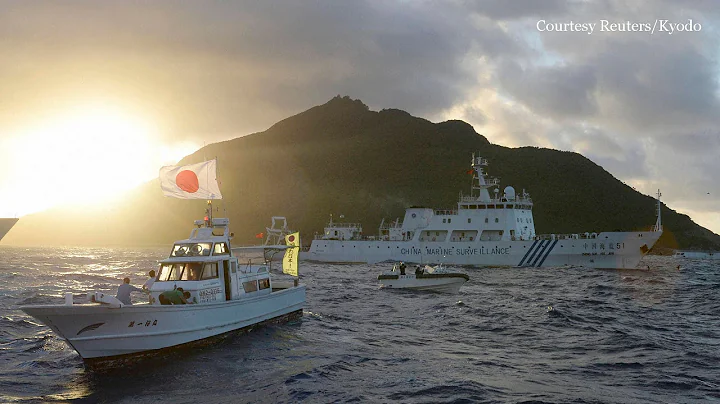
Wen Huo Anzhi
Northeast Marshal Zhang Zuolin fought a decisive battle against Japan on the railway. He used incredible strategies to defeat the bandits, but it resulted in his own personal tragedy.
The Japanese invaders invaded Northeast China, taking the South Manchuria Railway as their vanguard. Economically, it forced the three northeastern provinces to become vassals of Japan, and militarily opened the door to Northeast China. Liang Qichao commented that Japan "all those who can control my death are because they have the right of way."
After taking control of the three eastern provinces, the Japanese invaders wanted to activate the potential of South Manchuria in order to invade the whole of China. The Japanese invaders took Nanman Road as the central axis and expanded to the east and west. Expand and build Sitao Road and Tao'ang Road to the west, extending the devil's palm into Heilongjiang and Inner Mongolia. Anfeng Road and Jihui Road were built to the east with the intention of connecting with the North Korean railway network. If the Japanese invaders succeeded in their plot, once the war of aggression against China broke out, the Japanese army would set out from the mainland and get on the train and rush for a day and night to reach Shenyang, enter and exit Inner Mongolia, and conquer the Central Plains.
China is unable to revive itself and can only rely on the Beijing-Fengtian Railway to weakly maintain its national sovereignty in the Northeast. At this critical moment of life and death, Zhang Zuolin launched a generous attack and fought a large-scale siege of the railway line on both sides of the Songliao Plain. When the three northeastern provinces changed their banners in 1928, the northeastern railway network had turned the South-Manchuria Railway into a "dead end".
Zhang Zuolin won the railway war, but became a thorn in the side of the Japanese invaders. The Japanese invaders arbitrarily proposed the "New Manchuria and Mongolia Five Routes" negotiation case. Zhang Zuolin insisted on national integrity and was tough and unyielding. In the end, the Japanese invaders killed each other ruthlessly and created the Huanggutun Incident.
The South Manchuria Railway invaded the Northeast
"The South Manchuria Railway was the only tool for Japan to invade the three eastern provinces. After the British conquered India, the East India Company was established. The South Manchurian Railway was also one of the three eastern provinces of the East India Company. ."
After the Russo-Japanese War, Japan acquired the southern section of the Middle East Road and renamed it the South Manchuria Railway. Starting from Changchun in the north and reaching Dalian and Lushun in the south, the South-Manchuria Railway runs through the essence of the Songliao Plain. It is the economic lifeline of the three eastern provinces, but the ambitions of the Japanese invaders are not limited to economic aggression.
At that time, the Qing government was weak and could only use the " open door policy " caused by the conflict of interests among the great powers to survive. The three northeastern provinces are the focus of the opening up. Japan once seized the Liaodong Peninsula after the Sino-Japanese War of 1894, which triggered the "Three Kingdoms Intervention" and prevented the blatant military occupation of the Northeast. Therefore, the Japanese invaders decided to use the southern Manchuria road as an "indirect route" and carry out a quiet "soft invasion" of colonization.
Japanese colonial policy expert Santaro Okamatsu proposed a vicious trick, defining the nature of the South Manchuria Railway as a "colonial society" similar to the East India Company. On the surface, it bears the name of a government-business joint-stock company, but in fact it is a policy-based colonial institution that realizes Japanese aggression. The business does not care about profits and losses, but only aims to realize the aggression against China.

In 1931, Japanese soldiers controlled the railway in Northeast China.
The first president of the South Manchuria Railway Co., Ltd. was Goto Shinpei, the former civil affairs minister of the Taiwan Governor-General's Office. This person single-handedly completed the colonial political system after Japan occupied Taiwan and is Japan's number one soft aggression expert.
"Mantie" holds the perfect weapon for soft aggression. Northeastern agriculture is export-oriented, and the lifeblood of the export-oriented economy lies in the throughput port. The throughput port in the Northeast has always been Niuzhuang ( Yingkou ), but Yingkou is suffering from siltation inside and suffering from ice outside, so its development potential is limited. When Japan took over the South Manchuria Road, it opened a branch line to Yingkou in an attempt to control Yingkou Port. However, it soon changed its strategy and spent heavily on the construction of Dalian Port, which Japan had stolen.
html In 2020, Dalian has jumped from a small fishing village to the fourth largest port in China, second only to Shanghai, Hong Kong and Guangzhou. At that time, the annual throughput of Tianjin, the largest port in North China, was more than 4,000 ships and more than 5 million tons of materials entering and leaving the port. The throughput of Dalian Port in 1927 reached more than 4,200 ships and more than 8.37 million tons of materials.Under the squeeze of Dalian Port, Yingkou Port was quickly marginalized, with a cargo handling volume of only 700,000 tons during the same period. By controlling the main seaports of the three northeastern provinces, the "colonial society" can transform the northeastern economy into a vassal colonial economy of Japan.
Mantetsu's first step was to target soybeans, which are abundant in the Northeast.Japan's soil is poor, and during the Meiji Restoration, the population surged from 30 million to 60 million. Only by increasing agricultural production can the increasing population be fed. Therefore, Japan’s most urgently needed resource is “bean cake”, the best fertilizer made from soybean oil. The first task of Nanman Road and Dalian Port is to absorb as much Northeast bean cake as possible.
Dalian originally did not have an oil mill industry for pressing soybean cakes. The Japanese government used major trading companies such as Mitsui, Mitsui and Mitsubishi to go deep into the Songliao Plain along Nanman Road and set up farms in Changchun, Siping, Shenyang, Yingkou and Dalian to purchase soybeans. Japanese businessmen have received full financial support from the National Bank of Japan and have deep pockets. They can propose dream conditions in soybean-producing areas of paying first and receiving goods later, regardless of risks. Nanman Road provides preferential prices for soybean transportation, and Dalian Port provides tax-free free port preferential treatment for export to Japan.
In this way, soybeans from Songliao Plain are chasing profits and pouring into Dalian. In 1905, there were only a few manual oil mills in Dalian, with a daily output of dozens of bean cakes. In 1910, there were 35 large-scale oil mills, with a daily output of 25,000 pieces of bean cakes. By 1915, the output increased tenfold, reaching a daily output of 250,000 pieces of bean cakes. Most of the bean cakes exported from Dalian are shipped to Japan by sea, becoming the backbone of Japanese agriculture.
Railways can create industries, but they can also destroy industries. Manchuria Railway supports industries that are beneficial to Japan, but ruthlessly attacks Japanese competitors. The first to be hit hard was the steel industry, the source of industry. In Dalian, Zhou Wengui, the owner of Shunxing Iron Works, built his own steelmaking blast furnace. Manchuria Railway quickly took action and banned the transportation of iron ore to the Shunxing plant, easily killing the spark of industrial upgrading in the three northeastern provinces.
The industries in Northeast China are controlled by the South Manchuria Railway and cannot be upgraded to industry. The three major industries in the Northeast during the Qing Dynasty were oil mills for pressing soybeans, fire mills for grinding flour, and pots for brewing wine. On the eve of September 18th, the target industries were still oil mills, fire mills and pots.
The bulk goods exported from Dalian to Japan include bean cakes to fertilize Japanese farmland, miscellaneous grains to feed the Japanese, timber urgently needed for domestic construction, coal and various ores urgently needed for Japanese industry, and salt urgently needed for Japan's chemical industry. Manchuria has transformed Northeast China into a Japanese agricultural colony.
Second seaport and second trunk line
Turning Northeastern into a Japanese agricultural colony is just a break in point. The real strategic mission of the South Manchuria Railway is to complete the "two seaports and two main lines" and serve as the spearhead of military aggression against China.
The shortcut for Japan's invasion of China was to start from Japan's occupation of Korea and go west deep into the hinterland of China. "To conquer China, we must first conquer Manchuria and Mongolia." The Japanese invaders' ideal invasion railway was an east-west trunk line, connecting the Korean railway network to the east, crossing the Northeast to the west, and going deep into Inner Mongolia. Once the war of aggression against China broke out, the troops mobilized by Japan only needed to take a train, enter the Korea Strait railway ferry "Sekibu Liaison Ship" from Shimonoseki to Busan , and unload the ship directly in Busan. The original car goes directly to China. After galloping for one day and night to Shenyang, two days and nights to Inner Mongolia, and then heading south to Jehol Chahar, we can reach Beijing and herd horses in the Central Plains.
During the Russo-Japanese War, Japan built the first east-west railway- Anfeng Railway. It starts from Andong Port on the Yalu River in the east and reaches Shenyang City in the west. An iron bridge over the Yalu River is built to connect with the North Korean railway network. Anfeng Road is located away from the Inner Mongolia grassland, which was Japan's ideal springboard for the invasion of China. In the middle is Shenyang, where the Qing court stationed heavy troops, making it inconvenient to use troops. In 1907, Japan proposed to the Qing government a new plan for an east-west trunk line, the "Jilin-Hui Railway", which started from Huining on the Korean border in the east and ended in Jilin City in the west. At the same time, the Jilin-Changchun Railway under preparation was requested to borrow money from the Manchurian Railway for construction, and preparations were made to continue the construction of the third section of the railway from Changchun to Taonan, a military town on the edge of the Inner Mongolia grassland.
This group of east-west Shinkansen lines is a dagger inserted deeply into the hinterland of China. The Jihui-Jilin-Changchun Railway enabled the Japanese army to transport troops directly from North Korea to Jilin and Changchun in the center of the Songliao Plain, cutting off the defense deployment in the Northeast. Taonan is where Inner Mongolia comes into play. If you advance, you can attack Rehe, and if you retreat, you can control the grasslands of Inner Mongolia.


The east-west trunk line also has the ambition to deepen economic aggression. At that time, the only port that could compete with Dalian Port was Vladivostok. In 1914, Dalian Port exported more than 354,000 tons of soybeans, and Vladivostok exported more than 465,000 tons.To overwhelm Vladivostok, it is necessary to use the east-west trunk line to lead exports from Jilin, Heilongjiang and Inner Mongolia to North Korea's main port on the Sea of Japan Chongjin Port .
The north-south trunk line mainly operated by Nanman Road, combined with the east-west trunk line operated from Jihui Road, plus the two ports of Dalian and Chongjin, form the so-called "two seaports and two trunk lines".
When Japan proposed Jihui Road, all walks of life in China strongly resisted. Japan has only built one Jilin-Changchun railway, which is not connected to North Korea in the east and Inner Mongolia in the west. Its military value is limited and it became a strategic failure of Japan's invasion of China.
Therefore, all the "twenty-one points" proposed by the Japanese invaders in 1914 were withdrawn after negotiations. Only the Sitao Railway among the "Five Manchuria-Mongolia Railways" insisted on it to the end. It is the second section of the east-west trunk line connecting Siping, a railway port south of Changchun, from Nanman Road to Taonan.
The Bac Ninh Railway Bureau compiled "Northeast Railway Overview", which painfully analyzed the fatal crisis of the Sitao Road: "If the Sitao Road is completed, the east and north of Mongolia will be cut off. Try to check the location of Taonan, and go south to reach it via Liaoyuan From the south to Manchuria, it goes north to reach Longjiang via the Middle East , to the southwest it passes through Chifeng to Zhuangchengde, to the southeast it leads to Jilin, and to the west it reaches the territory of Chechen Khan Chahar, and then it invades the northern part of Eastern Mongolia. There is no more important town than Taonan. Therefore, Japan covets Taotao and threatens it in every possible way. It is not a coincidence that it will be willing to do so. "
There is still a lack of an east-west trunk line from Jilin City to North Korea. A section of the "Jihui Railway" is displayed. This is the last road to the destruction of China and must be stopped with all our strength, but corrupt politicians have ruined the overall situation. In 1922, Japan opened up the joints and built the Tiantu Light Railway from the Tumen River on the China-North Korea border to Laotou Valley in Tianbaoshan. It was completed in 1924.
In 1925, Manchuria Railway once again bribed officials and built a 211-kilometer eastward stretch from Jilin to Dunhua , which was called the Jilin-Dunshan Railway. These two railways run east to west along the original route of the Jihui Railway. After completion, there will only be more than 90 kilometers from Laotou Gou to Dunhua to complete the Jihui Railway.
There was only the last 90 kilometers left for the "Second Harbor and Second Trunk Line", and Zhang Zuolin suddenly woke up. He rushed to catch up, and with a clever layout, he resurrected the defeated troops and defeated Manchuria in just three years.
East Fourth Road and West Fourth Road
Zhang Zuolin’s main force in the Northeast Railway War was the Beijing-Fenghuang Railway. This was the most profitable gold railway in the country at the time, with annual profits exceeding 10 million yuan. The funds for road construction were borrowed from British businessmen, and Japan could not intervene. In 1925, when the Jilin-Huizhou Railway was only 90 kilometers away from opening to traffic, Chang Yinhuai, director of the Beijing-Fenghuang Railway Bureau in the Guanwai section, suddenly took action and built the "open branch line" on his own, firing the first shot of the railway's anti-Japanese war.
Chang Yinhuai was a domineering man. He knew that opening up the branch line would inevitably cause protests from the Japanese invaders. Zhang Zuolin might not be able to handle it, so he simply went ahead without telling his superiors. Liu Jingshan, the then Director of Road Administration of the Ministry of Transport, recalled his feat of building roads without permission: "Chang Yinhuai was planning to build a road to Tongliao within a year, so he came to me for discussion. I said: 'If you want to do it, you have to ask the veteran general. "Just mention it." He said, "It's troublesome to mention it. It's best to tell him after repairing it." He laid the rails and drove the materials before finishing the work. "It's been built in a month."
"Veteran" is the honorific title given to Zhang Zuolin by Northeast officials. During the rush to work, the Japanese minister protested to Zhang Zuolin, and the "veteran" ordered the work to be stopped. "Official documents were delivered to Chang Yinhuai's desk, where he often approved 'day and night processing'. In this way, by the end of 1927, the road was built to Tongliao." Deputy Director of the Train Service Department of the Beijing-Fengcheng Railway Bureau, who is in charge of road construction Wang Fengrui recalled Chang Yinhuai’s domineering attitude. The Japanese were so angry that they approached Zhang Zuolin to negotiate. Zhang Zuolin did not pretend to be cowardly and responded with one sentence: " Fengtian transportation construction has nothing to do with you. The west of Fengtian needs this railway."
"Da" refers to the Beijing-Fengtian Railway. Dahushan Station, "Tong" refers to Tongliao, an important grassland town in Inner Mongolia, about 170 kilometers north of Taonan. China can freely use the Beijing-Fenghuang Railway to transport troops, which is enough to fight the Japanese army invading from the Sitao Railway. This "opening up the branch line" opened up the strategic deployment of the railway's anti-Japanese war in one go.
Zhang Zuolin quickly promoted Chang Yinhuai and asked him to chair the "Three Northeastern Provinces Transportation Committee", which was the overall design agency for Northeast Transportation's anti-Japanese war. The Japanese protested angrily, but Zhang Zuolin asked his general counselor Yang Yuting to resist. Yang Yuting was a genius negotiator.
"Whenever Japan made a certain request to Zhang Zuolin, Zhang Zuolin always responded with 'Okay, okay, I'll ask Yang to do it.' If he wanted to ask for a written commitment, he would refuse with the excuse that he didn't understand the writing. As long as there is no written evidence, Yang Yuting always has a way to cancel it, degenerate it, or minimize the damage." Scholar Chen Chongqiao checked the files of the Ministry of Foreign Affairs of Japan and found that Yang Yuting played a double act with the veteran and frightened the Japanese. "During the negotiations on the Northeastern right-of-way, Japan wanted to exert pressure on Zhang Zuolin several times. But Japan's biggest concern at the time was 'lest opposition parties such as Yang Yuting would take the opportunity to create disputes,' which would wipe out the illegal rights and interests that Japan had obtained."
often Yinhuai’s second step is to resume the Fenghai Railway construction project. This was the strategy of Fengtian Governor Wang Yongjiang to compete with Manchuria Railway in 1922. At that time, the only way from Fengtian to Jihei Province was the Nanman Road, and the Japanese invaders could easily cut off the traffic in the three eastern provinces. Therefore, saving the Northeast needs to start by establishing a communication line between the two provinces of Fengyi and Jilin. At that time, there were three roads (cadastral city) in Fengtian Province. South Liaohe Road was controlled by Anfeng Road and Nanman Road, and Liaoxi Taochang Road was controlled by Sitao Road. Only the east road in the northeast corner still had an exit. Therefore, Wang Yongjiang decided to start from Shenyang and build a railway to connect to Hailong City on the east side road.
The railway passes through Hailongfu and reaches Jilin Province. The Japanese invaders resisted with all their strength, but Zhang Zuolin agreed to Japan's construction of the Taonang Railway from Taonan into Heilongjiang in exchange for the Fenghai Road. It's just that the project is not easy, the funds are difficult to raise, and it has been delayed for several years. After Chang Yinhuai presided over the construction of the Northeast China Railway, the Fenghai Railway started construction quickly and the entire line was opened to traffic in April 1927.
The Fenghai Railway has ignited the hope that the three eastern provinces will escape the control of the "Manchurian Railway". Jilin Governor Zhang Zuoxiang immediately raised funds to build the Jilin-Hai Railway from Jilin City to Hailong Chaoyang Town, connecting it with the Fenghai Railway. In 1930, the Jihai Railway was opened to traffic, which dealt a heavy blow to Manchuria Railway.
Local cultural and historical records: "At that time, all strata in Jilin were very encouraged and agreed. Most freight owners and passengers, based on patriotic sentiments, voluntarily spent more freight to travel through Jihai (from Jihai and Fenghai to Shenyang than Youji Long Manchuria Railway). Shenyang is a little further away). At that time, the passenger and cargo transportation volume of Jilin-Changzhou Railway and Manchuria Railway was greatly reduced. "
When the Jihai Railway was under construction, Zhang Zuoxiang went to Panshi County to inspect the project. The lecture used simple military language, explaining that he raised huge sums of money to build the Jihai Road because of an old bricklayer's dream of saving the country: "Brother passed by Panshi this time, mainly to inspect the construction status of the Jihai Railway. The fucking Japanese devils used the South Manchuria Line to block Let's be ambitious and do it ourselves. The engineers and materials are all ours, so let's take care of him. I am a carpenter, so I can't fool anyone."
Heilongjiang Warlord Wu Junsheng was also anxious. In 1925, Heilongjiang Province raised its own funds to build the Huhai Railway from Songpu Town in Hulan County to Hailun County. Hulan and Harbin face each other across the Songhua River , which was the starting point of Heilongjiang's pioneering at that time. Hailun is located in the center of the province and is the most ideal railway intersection within the province. With the north-south trunk line in the province, Wu Junsheng immediately promoted the east-west trunk line Qiqihar Railway, which is expected to run from Qiqihar, the provincial capital, to Keshan Town, more than 100 kilometers northwest of Helen. This area is the main soybean-producing area in Heilongjiang. The cross-shaped railway connecting soybean-producing areas is a golden artery for Heilongjiang's economic development.
The next step is to connect the Heilongjiang railway network with Fengji Province. Zhang Zuoxiang proposed a Jilin-Tongji railway plan from Jilin City to Tongjiang County, an important national defense town in the east of Heilongjiang, but Chang Yinhuai had another idea. He decided to directly use the railways built by Japan's Manchurian Railway with forced loans to serve China, forming a railway network in the three eastern provinces, and defeating the Manchurian Railway in one fell swoop. This seemingly incredible development strategy is the "East 4th Road and West 4th Road" intermodal transportation.
"East 4th Road" and "West 4th Road" are actually only 7 railways. The roots of both the east and west road networks are Jingfeng Road."East Fourth Road" is a combination of 4 railways including Jingfeng, Fenghai, Jihai and Japanese-owned Jidun; "West 4th Road" is a combination of 4 railways including Jingfeng, Japanese-owned Sitao, Japanese-owned Taoang and Qike . Chang Yinhuai promotes "intermodal transportation" of these seven railways, which means consistent fare regulations and in accordance with China's policy, and attacks the Manchuria Railway head-on.
"Vehicles from all roads pass through the track directly, and intermodal transport passes are sold. Consigned goods can be transported directly to any station on each road, without the hassle of transferring and changing trains in the middle, so as to save procedures and reduce freight. And according to the intermodal transport policy , determine the intermodal freight rate according to the long-distance decreasing system, encourage large-scale export of goods, and control competition with foreign railways." Wang Fengrui, deputy director of the Beijing-Fengcheng Railway's rolling stock department, explained the anti-Japanese ambitions of the "East Fourth Road and West Fourth Road".
What is strange is that in order to complete this anti-Japanese railway network, Manchuria Railway must be required to hand over the Sita, Taoang and Jidun railways, obey China's dispatching orders, and turn around to attack Manchuria Railway.
These three railways all have aggressive missions. Jidun Road is a section of the "Jihui Railway" that was the vanguard of the Japanese invasion. The Sitao Road had turned a loss into a profit since 1917. The Manchurian Railway insisted on using the surplus to repair the road to prevent China from using the surplus to pay off the loans and regain control. This delay lasted more than ten years.
As for Tao’ang Road, Manchuria Railway’s latest invasion route, it is a money-losing product specially used for invasion. In 1924, the Manchurian Railway used the Fenghai Railway to negotiate to borrow construction rights on the Tao'ang Road, which ran from Taonan along the edge of the Inner Mongolia grassland to the Ang'ang River in Qiqihar, the capital of Heilongjiang Province. It had no economic value at the time and was purely for the rapid invasion of Inner Mongolia and Heilongjiang. build. The annual loss is 2 million to 3 million yuan, all of which is paid by Manchuria Railway.
However, Manchuria Railway was honest and bowed its head and handed over these three railways. This is because Chang Yinhuai holds the trump card in the railway war: throughput port.
Huludao and Huanggutun
When Japan first built Dalian Port, the Qing government selected Huludao to compete with Dalian. In 1910, the Qing government established the Huludao Port Construction Department and began building the port, but it was stopped due to the Ding Revolution. In 1927, Chang Yinhuai proposed the East Fourth Road and the West Fourth Road, and the opening of Huludao Port was launched again.
Huludao can overwhelm Dalian Port just by relying on the situation. Calculated in terms of distance, at that time the major railway ports of Fengjiang and Heilongjiang were closer to Huludao than Dalian. Shenyang, the railway hub of Fengtian, is 246 miles away from Dalian in the east and only 184 miles away from Huludao in the west; Taonan, where the Sitao Railway and the Taonang Railway intersect, is 554 miles away from Dalian and only 470.8 miles away from Huludao; Jilin City, the railway center of Jilin , the distance from Changchun to Dalian by Jilin-Changchun Railway is 515 miles, while the distance from Huludao by rail is only 456.7 miles. It is about 612 miles from Harbin to Dalian and 607 miles from Huludao.

Secondly, the freezing period of Huludao is only about 10 days, and the ice layer is extremely thin. It is actually a year-round ice-free port. As long as Huludao opens its port, Dalian will inevitably be squeezed out.
Railway freight rates are calculated based on distance, which is very realistic. Whichever railway is closer to the seaport, go to that one. Before the opening of the Huludao port, the Fenghai Railway and Jihai Railway run by the Chinese could only make money for the Japanese invaders, because the goods from Fenghai and Jihai were handled by Dalian. Even if they worked hard to build the inland railway, they still have to be humble and beg for the Manchuria Railway to be transported to Dalian, becoming the "training line" of the Manchuria Railway. However, as soon as the news of the opening of Huludao Port came out, the situation suddenly changed. Instead, Manchuria Railway became the training line of "East Fourth Road and West Fourth Road".
Fenghai Railway is a typical example of turning defeat into victory. Fenghai Railway Bureau negotiated with Manchuria Railway for joint transportation in February 1926. The Japanese invaders were arrogant and held more than 20 meetings and negotiated for 2 years. They forced Fenghai Road to surrender its rights and interests before signing in February 1928. Just after signing the contract, Chang Yinhuai, who was promoted to deputy minister of transportation, suddenly ordered Fenghai to be changed from provincial to state-owned, tearing up the unequal agreement. At this time, the Huludao port opening project was already underway, and the Manchurian Railway had no choice but to bow its head and discuss intermodal transport in August 1928. This time, after only two months of negotiation, an equal intermodal transport agreement was signed.
With Huludao, Manchuria Railway is destined to become the training line of "East Fourth Road and West Fourth Road". Therefore, Chang Yinhuai can incorporate the Sitao, Taoang and Jidun railways dedicated to the Japanese invasion into the Northeast Railway Intermodal Transport Network. Use Chinese railway regulations, managed by the Chinese themselves, to serve the purpose of combating Manchurian railways.
The only way for the Japanese invaders to save themselves is to open up the last 90 kilometers of the Jihui Railway and use Chongjin Port to compete with Huludao Port. In terms of distance, Chongjin Port has an advantage over the three provinces of Bongji and Heilongjiang. The distance from Changchun to Chongjin at the center of Nanman Road is 428 miles, and the branch line is opened to reach Huludao for 430 miles; Jilin City is 348 miles from Chongjin, and it is 475 miles from Huludao; Harbin is 576 miles from Chongjin, and 607 miles from Huludao. However, Chongjin is a foreign port. As long as the Chinese government holds Huludao, it will have the confidence to use tariffs and other means to easily boycott Chongjin Port.
"After the construction of Huludao Port, the Manchurian Railway will no longer be able to carry cargo, and there will be no ships entering or leaving Dalian Bay. In a few years, today's prosperous Dalian may become a desolate and uninhabited area." "When the Huludao project was in full swing, the Beining Railway Bureau assessed the prospects of Dalian and Nanman Road in this way.
In less than five years, the situation of the Northeast Railway War changed drastically, and the Japanese invaders were naturally unwilling to give up. In 1928, the Japanese invaders proposed the "Five New Manchuria-Mongolia Roads" to Zhang Zuolin. One of them that must be fought for was the last section of the Jihui Railway, the Duntu Line from Dunhua to the Tumen River.
At this time, Fengjun was losing ground. The Japanese minister approached Zhang Zuolin and threatened him in every possible way, but Zhang Zuolin refused to give in. On the contrary, he deeply felt that it was right to stop the civil war and unite to resist Japan. In June 1928, Zhang Zuolin decided to return to Northeast China and cooperated with the Nanjing government to unite with the outside world. On the night of departure, the "veteran general" summoned all civil and military officials at Huairen Hall and spoke impassionedly about his willingness to sacrifice for the anti-Japanese war: "We should put the country first. The Japanese have interfered with us and have sent troops. Our brotherly fighting should stop. I can't argue anymore. I am ready to sacrifice for my country. It's not a big deal for me to give in."
Liu Jingshan, who was present at the training, recalled sadly: "We listened. He talked a lot about being a "scumbag" and "sacrifice for the country", which was a bit strange. The next day, he was bombed in Huanggutun. "
.




















